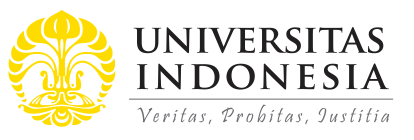
Abstract
This article examines necessary elements to be considered in designing urban forest at the Ragunan Zoo, Jakarta, as part of increasing the role of the zoo to educate people on animals and their habitats. The purpose of the community project conducted by the Architectural Team from the Universitas Indonesia is to assist the management of the Ragunan Zoo to develop part of the zoo area as an urban forest. The Zoo has already an intention to incorporate the urban forest not only as recreation space but as part of a larger development of the zoo that focuses more on the welfare of the animals and creating a memorable experience for visitors. The idea of landscape immersion, an approach in zoo design that incorporates the needs of both visitors and animals so that the zoo can be a place for education, conservation, and recreation, prioritizes the welfare of animals and natural conditions instead of focusing only at aspects related to human comforts. The development of the urban forest is intended to be a successful example of designing landscape and natural environment for the zoo. Accordingly, urban forest can support community activities and the need for green and open spaces for Jakarta. In doing so, this article outlines the importance of urban forest and addresses the benefit of good design for the zoo and providing green space for the city. Finally, this piece provides case study examples describing the context in designers use their knowledge and ability to help the management to collaborate with university and community in the development of the zoo, especially with the focus on urban forest as an extension of landscape immersion. In conclusion, through community engagement, not only the management can have design proposal but also students of Universitas Indonesia can experience the design process and connection between developing urban forest and communities in the city.
References
Baratay, E., & Hardouin-Fugier, E. (2002). Zoo: A History of Zoological Gardens in the West. London: Reaktion Books.
Coe, (1985). Design and Perception: Making the Zoo Experience Real, 4(2), pp. 197-208.
Coe (1997). Entertaining Zoo Visitors and Zoo Animals: An Integrated Approach. Retrieved from: www.joncoedesign.com/pub/PDFs/EntertainiZooVisit1997.pdf.
Coe, J. (1994).”Landscape Immersion Origins and Concepts”, Proceeding from the AZA Convention, American Zoo and Aquarium Association, Bethesda, MD. Retrieved from www.joncoedesign.com/pub/PDFs/LandscapeImmersion1994.pdf.
Conan, M. (2000). Environmentalism in Landscape Architecture, 22, Washington DC: Dumbarton Oaks Colloquium on the History of Landscape Architecture.
Clayton, S., Fraser, J., & Saunders, C. (2009). “Zoo experiences: conversations, connections, and concern for animals.” Zoo Biology 28(5), pp. 377-397.
Hone, D. D. (2014, August 19). Why zoos are good. Retrieved from https://www.theguardian.com/science/lost-worlds/2014/aug/19/why-zoos-are-good.
Jackson-Gould, J., Kramer, S., Gwynne, J., Coe, J., Litwak, H., Peterson, J., Harms, R. (1991). Current Approaches to Zoo Interpretation. The Journal of Museum Education, 16(2), 8-14. Retrieved from http://www.jstor.org/stable/40478894.
Ludlum, S. (2003). Historic Zoo Architecture: Creating New Meaning, MS Thesis, North Carolina State University–Raleigh.
Milstein, T (2009). Somethin' tells me it's all happening at the zoo: Discourse, Power, and Conservationism. Environmental Communication: A Journal of Nature and Culture, 3(1), pp. 25-48.
Olive, A., & Jansen, K. (2017). The contribution of zoos and aquaria to Aichi Biodiversity Target 12: A case study of Canadian zoos. Global Ecology and Conservation, 10, pp. 103-113.
Roe, K., McConney, & A., Mansfield, C. (2014a) “How do zoos ‘talk’ to their general visitors? Do visitors ‘listen’? A mixed method investigation of the communication between modern zoos and their general visitors.” Australian Journal of Environmental Education, 30(02), pp. 167-186.
Roe, K., McConney, A., & Mansfield, C. (2014b). “The Role of Zoos in Modern Society—A Comparison of Zoos' Reported Priorities and What Visitors Believe They Should Be.” Anthrozoös: A multidisciplinary journal of the interactions of people and animals, 27 (4).
Recommended Citation
Lukito, Yulia Nurliani
(2018).
The urban forest project as an extension of landscape immersion and a way to support community engagement in the Ragunan Zoo, Jakarta.
ASEAN Journal of Community Engagement, 2(2).
Available at: https://doi.org/10.7454/ajce.v2i2.135







